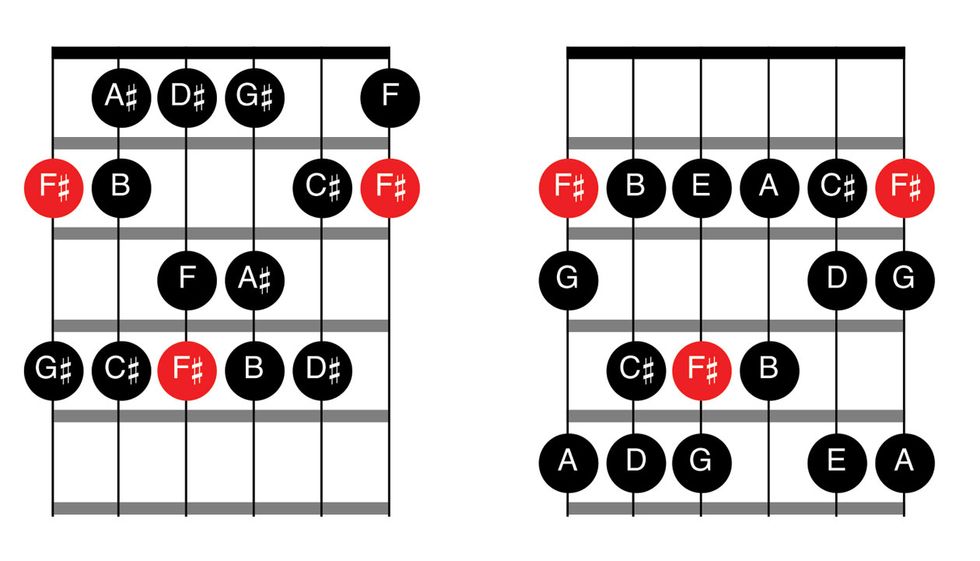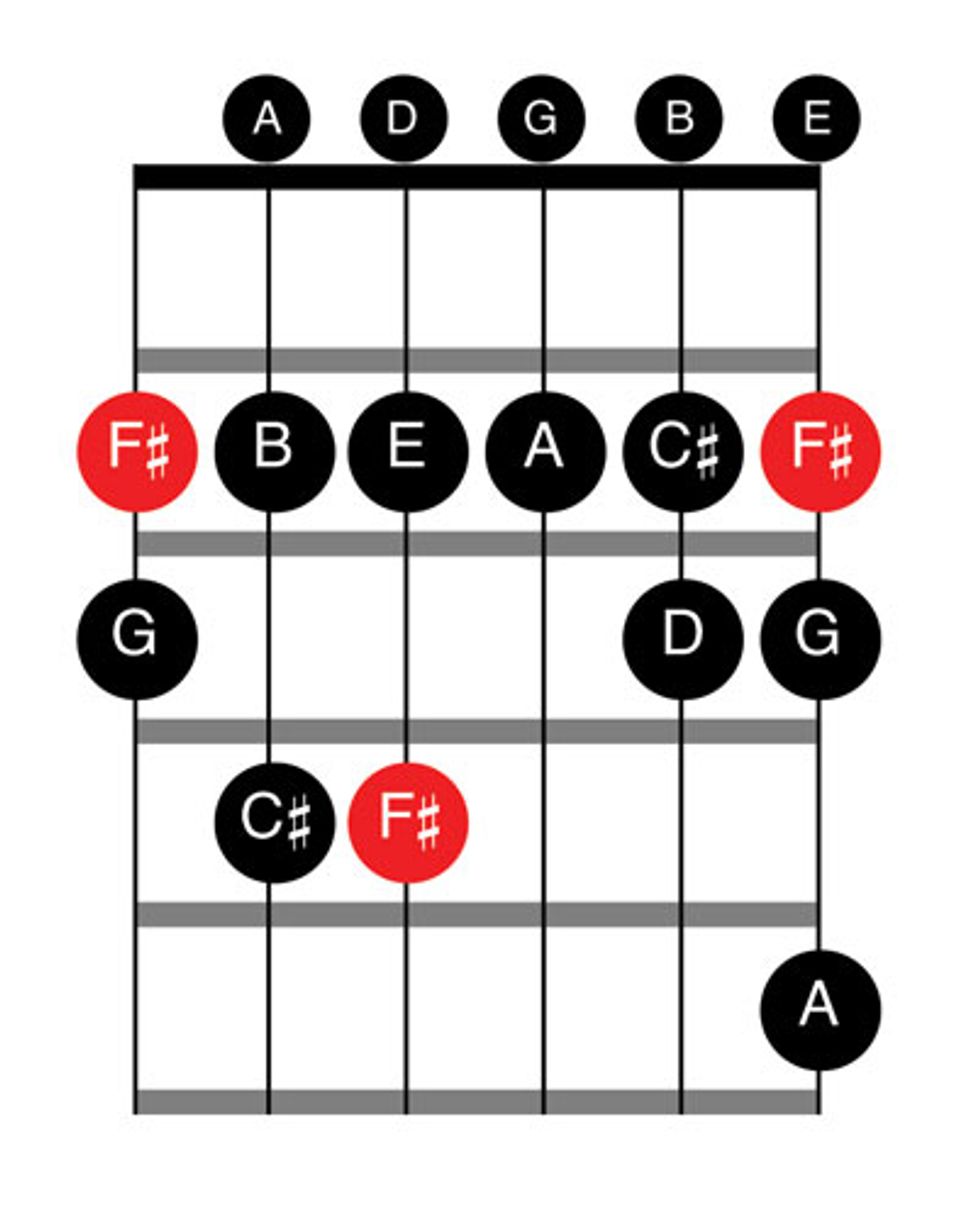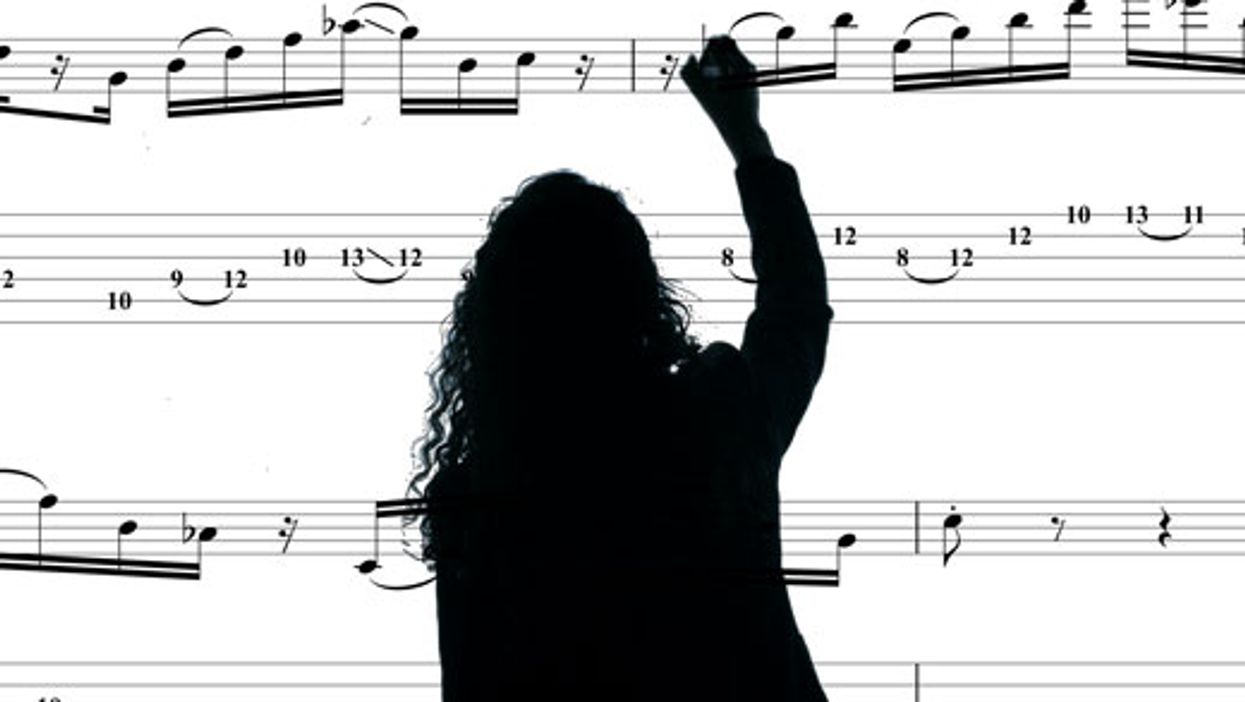Chops: Intermediate
Theory: Beginner
Lesson Overview:
• Discover how to construct the Phrygian scale.
• Learn how to play the Phrygian scale in two positions.
• Learn riffs within the Phrygian scale to play over major and minor chords. Click here to download a printable PDF of this lesson's notation.
The Phrygian scale’s dark, ominous, and mysterious sound makes it a staple of metal and flamenco players. While this series of notes can sound melancholy at times—it’s a minor scale after all—it can also deliver a cheerful mood and can be played in major keys.
How Can I Build a Phrygian Scale?
We’ll focus on two different ways to create a Phrygian scale. The first is to think of it as a mode of a major scale. Simply put, the Phrygian scale is the third mode of a major scale. For example, the third note in a D major scale (D–E–F#–G–A–B–C#) is F#. If you play the exact same notes of a D major scale, but start on F# instead of D, you get an F# Phrygian scale (F#–G–A–B–C#–D–E). Notice how we simply shifted the order of the notes of D major to make F# the first note in the sequence. The notes of the scale did not change, only the order in which we play them.
You can also build the Phrygian scale from a formula. The Phrygian scale formula is 1–b2–b3–4–5–b6–b7. It’s a major scale with the 2, 3, 6, and 7 degrees lowered by a half-step. Let’s stick to our F# example. With this method, we would start with an F# major scale (F#–G#–A#–B–C#–D#–E#) and then lower the specific degrees. This yields F#–G–A–B–C#–D–E. Same result, but two different ways to get there. In Ex. 1, you can see a standard “E” shape fingering for F# major and then the corresponding F# Phrygian fingering.
Okay, Now What?
Next let’s explore the sounds and phrases of F# Phrygian over major key chord progressions. In Ex. 1, we saw the scale with the root on the 6th string. Notice how we extend the scale with G and A on the 1st string. These notes give us additional melodic voicings that we will be exploring later in this lesson. When learning new scales, it’s important to practice the proper technique with our fretting hand. Proper technique is crucial in developing speed, accuracy, as well as muscle strength in our hands. Practice doesn’t make perfect, perfect practice makes perfect, so take the time to use the correct fingers on the correct frets whenever you are learning scales.
We want to assign our fingers to frets before we play the scale. All notes played on the 2nd fret will be played with your first finger; 3rd fret notes will be played with your second finger; 4th fret notes with your third finger; and 5th fret notes with your fourth finger. Keep in mind that we want our fretting hand to feel balanced as we play the scale. Let’s ensure we have a proper technique when playing this cool and creepy scale.
In Ex. 2, we view F# Phrygian as an open scale, which simply means we have open strings within the pattern. In a similar manner to Ex. 1, proper fretting hand technique is vital for playing this scale smoothly and efficiently. You’ll be using the same finger-to-fret assignments as Ex. 1 with this open F# Phrygian scale. When learning this scale, be mindful of the open strings—they can sneak up on you! Practice both versions of F# Phrygian along with a metronome to get the notes under your fingers and hear this eclectic collection of tones in action.
Let’s Get to the Music!
By now you’ve been feverishly practicing the Phrygian scale to a metronome and playing the notes smoothly with a confident fretting hand. Now let’s play some solos and rock out!
In Ex. 3, we begin exploring the Phrygian scale in the context of a D–Bm–F#m–A progression. For this Flamenco-inspired example, our melody in measure one begins with F#, followed by the b2, b3, 4, 5, and ending with the b6. This melody line allows us to hear the surprisingly cheerful and melodic relationship between the b2 and b3 over a major chord. In measure two, notice the melodic tension the b5 and b6 bring to the Bm chord. When playing the melody line in measure two, be sure to play the F# on the 2nd fret of the 1st string with your first finger, and the E on the 5th fret of the 2nd string with your fourth finger.
Click here for Ex. 3
As we move along to Ex. 4, we will be using F# Phrygian as an open scale. Like Ex. 3, we will focus on the b2, b3, b6, and b7. In this song-based example, we will be playing a melody over a D–F#m–G–D progression. The melody line on this track is also an exercise in hammer-ons and pull-offs. Think “Over the Hills and Far Away” by Led Zeppelin.
Click here for Ex. 4
Lastly, in Ex. 5 we have the 1, b2, b3, and b7 of the scale played at different octaves. Minor tones galore. When playing this one, keep in mind where the pocket is, and let your newfound knowledge of the Phrygian scale take you to new melodic heights!



















